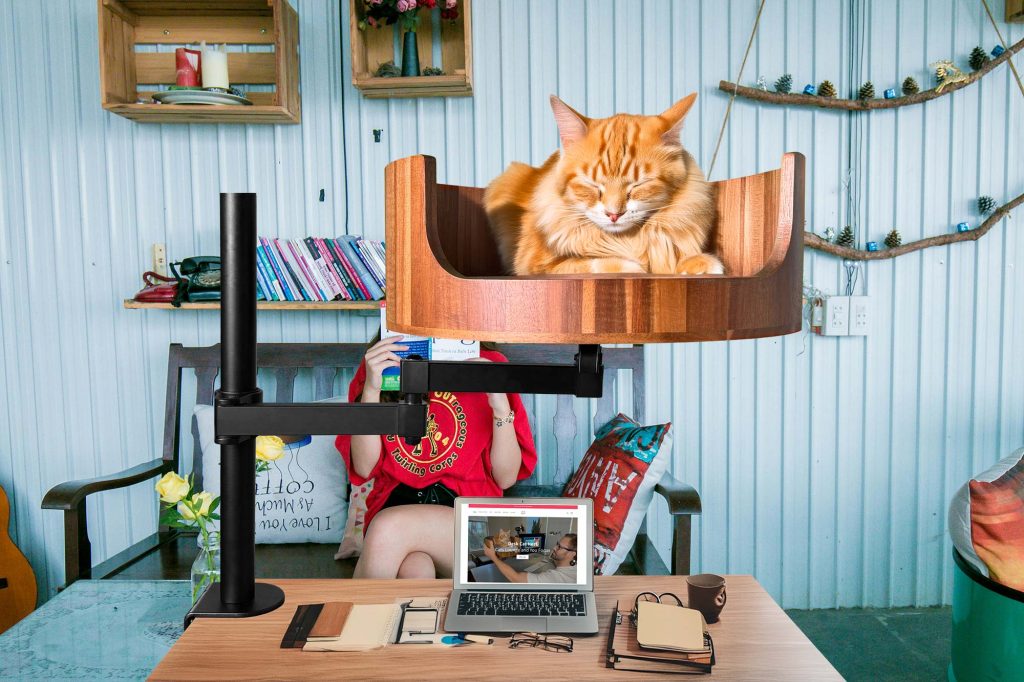Have you ever noticed your cat wiggling its tail while lounging on your desk? This seemingly subtle behavior actually plays a significant role in feline communication. By understanding the various ways in which cats use their tails to express themselves, you can deepen your bond with your furry friend and ensure a harmonious relationship.
In this article, we will delve into the intricacies of feline tail language, exploring the different messages that cats convey through this often-overlooked body part. From the subtle flicking of the tail tip to the vigorous swishing of the entire tail, each movement carries its own meaning. By deciphering these signals, you can better interpret your cat’s moods, preferences, and intentions. Whether your cat is purring contentedly while gently twitching its tail or lashing it back and forth in agitation, being attuned to these cues will help you respond appropriately and strengthen your feline-human bond.
1. Cat tail wiggling is a crucial form of communication for felines.
2. The speed, direction, and position of the tail can convey different messages.
3. A slow tail wiggle could indicate curiosity, while a fast, vigorous wiggle might signal agitation.
4. Understanding your cat’s tail movements can help improve communication and strengthen your bond.
5. Paying attention to your cat’s body language, including tail wiggles, can lead to a deeper understanding of their needs and emotions.
Understanding Feline Communication
Felines communicate in various ways, with one of the most common methods being through their tails. The way a cat wiggles its tail can convey different messages depending on the situation. It is crucial for cat owners to understand these signals to better comprehend their pet’s needs and emotions.
Types of Tail Wiggles
There are different types of tail wiggles that cats display, each carrying a specific meaning. For example, a slow and gentle wiggle may indicate that the cat is feeling relaxed and content. On the other hand, a fast and aggressive wag could signal that the cat is feeling irritated or agitated. Paying attention to these subtle cues can help in deciphering your cat’s mood.
Body Language Cues
In addition to tail wiggles, cats use other body language cues to communicate. For example, a cat with its ears flattened back and tail puffed up may be feeling threatened or scared. Understanding these signals in conjunction with tail wiggles can provide a more complete picture of your cat’s emotional state.
Common Misinterpretations
It is essential for cat owners to be aware of common misinterpretations of feline tail wiggles. For instance, many people mistakenly believe that a cat wagging its tail is a sign of happiness, when in reality, it can indicate frustration or annoyance. Being mindful of these misconceptions can help prevent misunderstandings between cats and their owners.
Case Studies and Examples
To further illustrate the importance of understanding feline communication, consider the following case studies and examples. For instance, a cat owner who misinterprets their pet’s tail wiggles as a sign of playfulness may inadvertently provoke aggression. By learning to accurately read their cat’s body language, owners can foster a stronger bond with their feline companions.
Frequently Asked Questions
How can the Desk Cat Nest help with my cat’s tail wiggling?
The Desk Cat Nest provides a cozy, comfortable space for your cat to relax and feel secure. This can help reduce stress and anxiety, which are common causes of tail wiggling in cats.
Is the Desk Cat Nest suitable for all cat breeds?
Yes, the Desk Cat Nest is designed to accommodate cats of all sizes and breeds. The cozy design and soft materials make it appealing to cats of all kinds.
How do I introduce my cat to the Desk Cat Nest?
It’s best to place the Desk Cat Nest in a quiet, familiar space where your cat likes to hang out. You can encourage your cat to explore the nest by placing their favorite toys or treats inside.
Can the Desk Cat Nest be easily cleaned?
Yes, the Desk Cat Nest comes with a removable cushion that can be easily washed. The exterior of the nest can be spot cleaned with a damp cloth. This makes it simple to keep the nest fresh and clean for your cat.
Will the Desk Cat Nest help with other behavior issues in my cat?
While the Desk Cat Nest is specifically designed to provide a safe and comfortable space for your cat, it may also help with other behavior issues such as scratching furniture or excessive meowing. The cozy environment can help your cat feel more secure and relaxed overall.
In conclusion, the Desk Cat Bed is a valuable choice for cat owners whose feline companions have a tendency to wiggle their tails excessively. This unique bed provides a cozy and comfortable space for cats to relax and unwind, helping to reduce stress and anxiety that may be causing the tail wiggling behavior. The raised design of the bed also allows cats to survey their surroundings and feel secure, further promoting a sense of calm. With its soft cushioning and sturdy construction, the Desk Cat Bed offers a practical solution for managing and addressing cat tail wiggling, while also providing a stylish and functional addition to any home decor. Invest in the Desk Cat Bed today and give your furry friend the comfort and support they need to live their best life.


